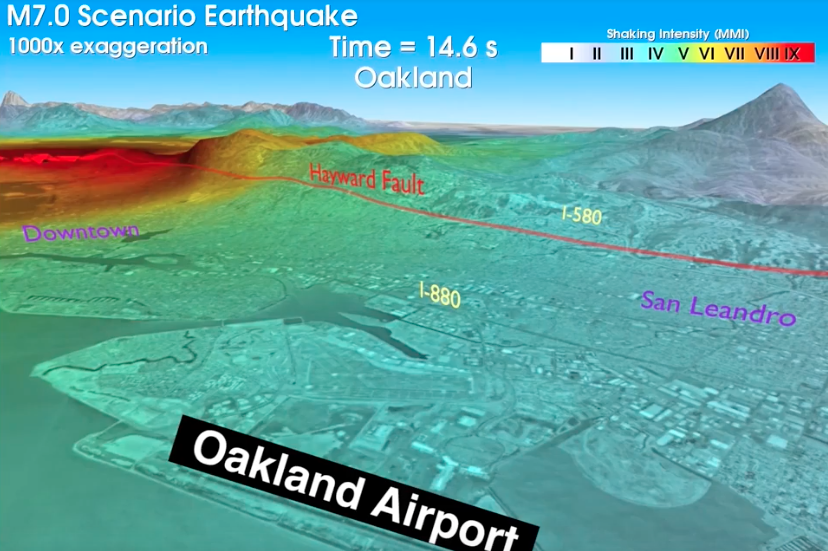The Hayward Fault: Its History
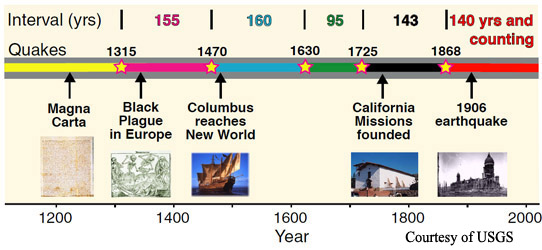
The history of the Hayward fault goes very far back into the past—thousands and thousands of years! The Earth takes a very long time to change significantly, and the North American Plate and the Pacific Plate have been sliding past each other for quite a long time. This sliding has created the extensive fault network that is home to the Hayward fault. As these two big plates move past one another, they do so very, very slowly due to the tremendous amount of friction between them. However, as time passes, the two sides of the fault build up energy and eventually, there is enough energy that they can overcome the powerful force of friction. When this point is reached, the two sides of the fault slide past each other quickly and the energy that was stored at the fault is released creating what we feel as an earthquake.
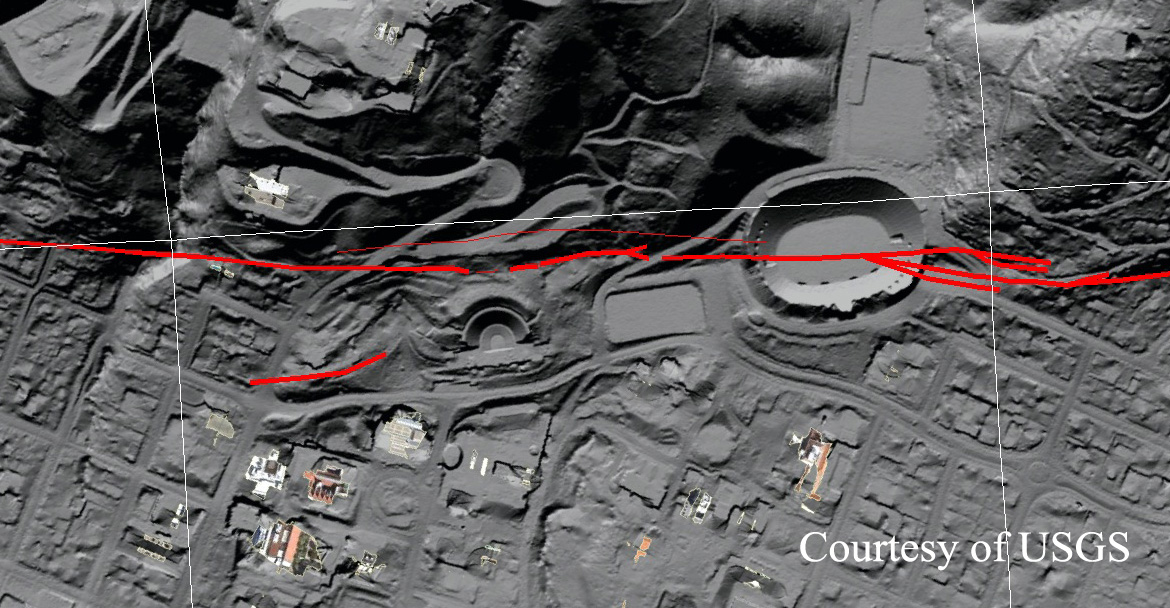
UC Berkeley Sits on the Hayward Fault
An InSAR image of the east side of UC Berkeley and the Hayward fault (red). Notable structures include Memorial Stadium and the Greek Theater.
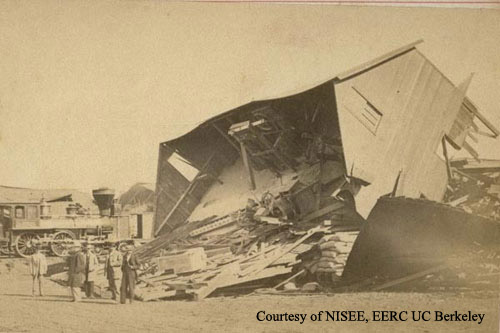
A stud mill in Hayward destroyed by the 1868 earthquake.
The Hayward fault repeats this process over and over and over again. Sometimes, the fault ruptures a little bit and releases a little bit of energy, creating a small earthquake. These are fairly common and if you have lived in the Bay Area for a while, you are almost sure to have felt a minor event. More concerning, however, are the earthquakes that happen far less frequently. These release a lot of energy can cause major damage, injury, and death. The last major earthquake that the Hayward fault produced was in 1868. At the time, it was known as the 'great San Francisco quake' (this was before the infamous 1906 quake, produced by the San Andreas fault), and it produced massive amounts of damage and several people lost their lives.
Scientists have a good deal of information about the 1868 event because there were people living in the Bay Area at the time, but if they want to learn about earthquakes on the fault prior to a written record, they have to use very clever methods. One way to achieve this is to dig a trench in the ground where the fault lies. Then, seismologists can look at the different layers of the earth and determine that an earthquake happened, as well as the date that it happened. Looking back hundreds of years, seismologists have found 12 major earthquakes with an estimated magnitude of 6.3 or greater. The last five of these occurred with an average interval time of 138 years. It appears that it takes about 140 years for the Hayward fault to accumulate enough energy to produce a major earthquake. With the last major event 144 years ago (1868), it is reasonable to believe that the next big one could happen at any time. Find more about how to prepare and what to do in an earthquake here.
The Hayward Fault
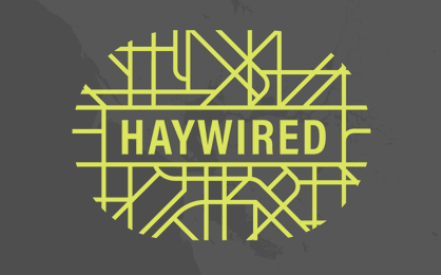
What if...
Learn more at outsmartdisaster.com
A 7.0 earthquake hit the San Francisco Bay Area? Are you, your family, and your business prepared to outsmart disaster?
